What does it mean to “be a woman”? A statement of identity, but also a question that takes on different nuances depending on time and context. Pompeii is no exception. It is precisely to the condition of women in the Vesuvian city that the exhibition Essere donna nell’antica Pompei (Being a woman in ancient Pompeii) is dedicated, set up in the Palestra Grande of the Pompeii Archaeological Park from April 16, 2025 to January 31, 2026, curated by Francesca Ghedini and Monica Salvadori in collaboration with the Universities of Padua, Salerno and Verona.
Thanks to its extraordinary state of preservation, Pompeii offers a privileged vantage point for studying the role of women in Roman society. The documentation that has emerged over nearly three centuries of excavations now makes it possible to analyze not only high-ranking female figures, but also those belonging to the humbler classes. The exhibition follows in the wake of the previous exhibition, The Other Pompeii, which turned the spotlight on the everyday life of ordinary people.
Through an exhibition itinerary divided into eight sections, the Pompeian female universe is told through a wide selection of frescoes, private and funerary portraits, inscriptions, graffiti and everyday objects. Different categories of women - matrons, freedwomen, slaves - are presented at various stages of life: birth, childhood, marriage, motherhood and death. And also the different roles women played in society: from aristocratic matrons and well-off freedwomen engaged in activities of great social, economic and religious significance, to free and slave workers who performed all kinds of trades, such as spinners and weavers, mistresses, saleswomen, bakers, sorceresses, prostitutes and so on.
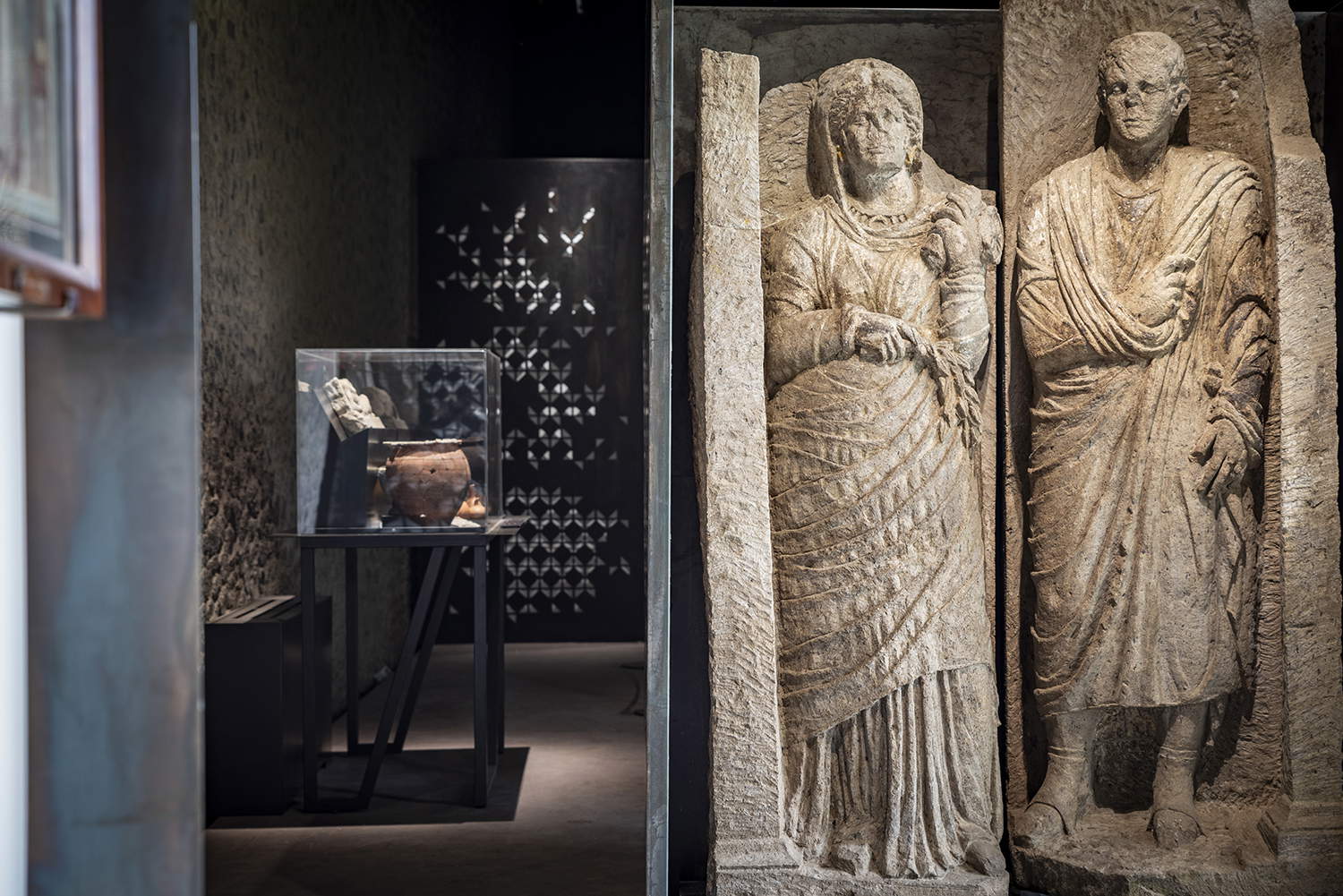
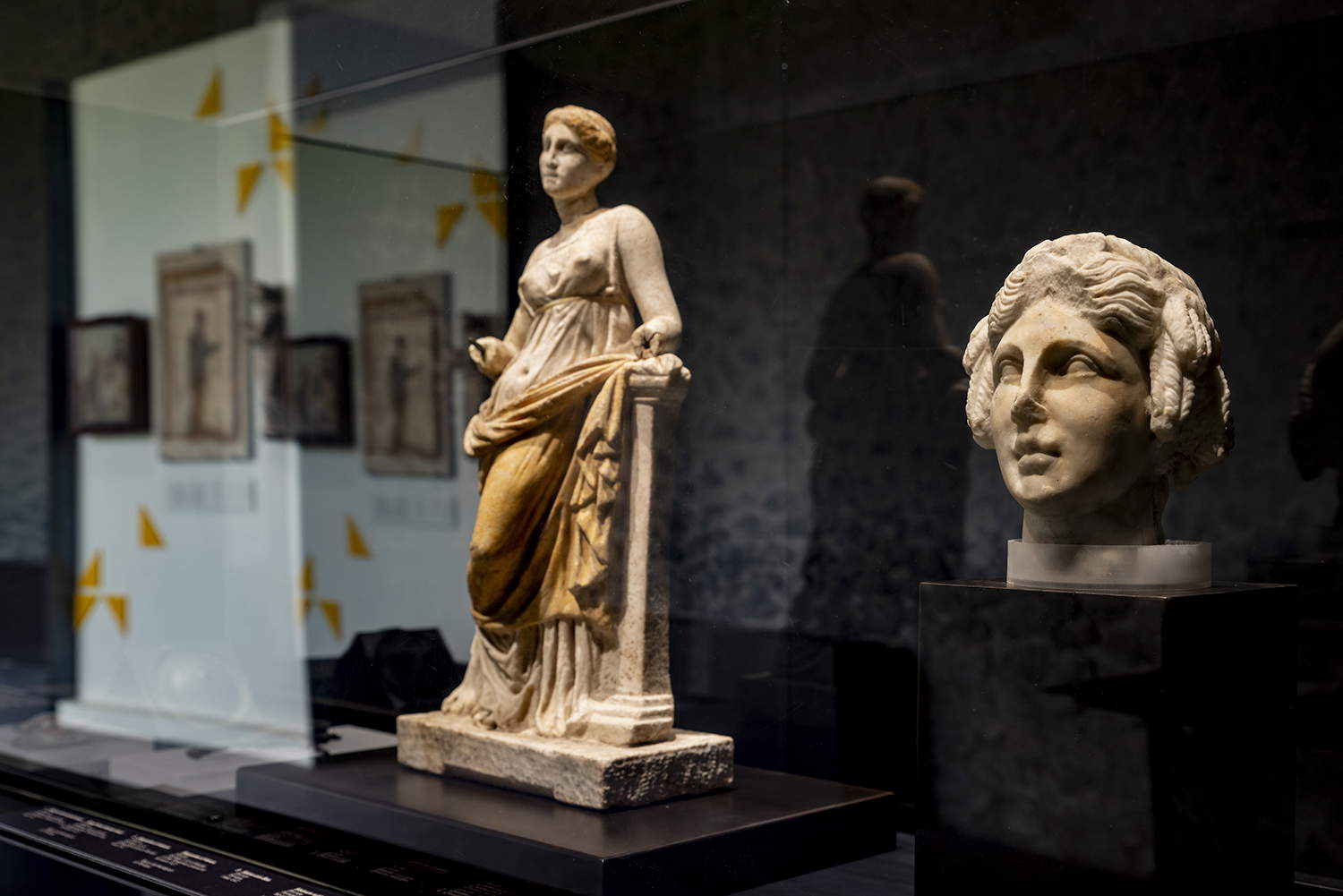
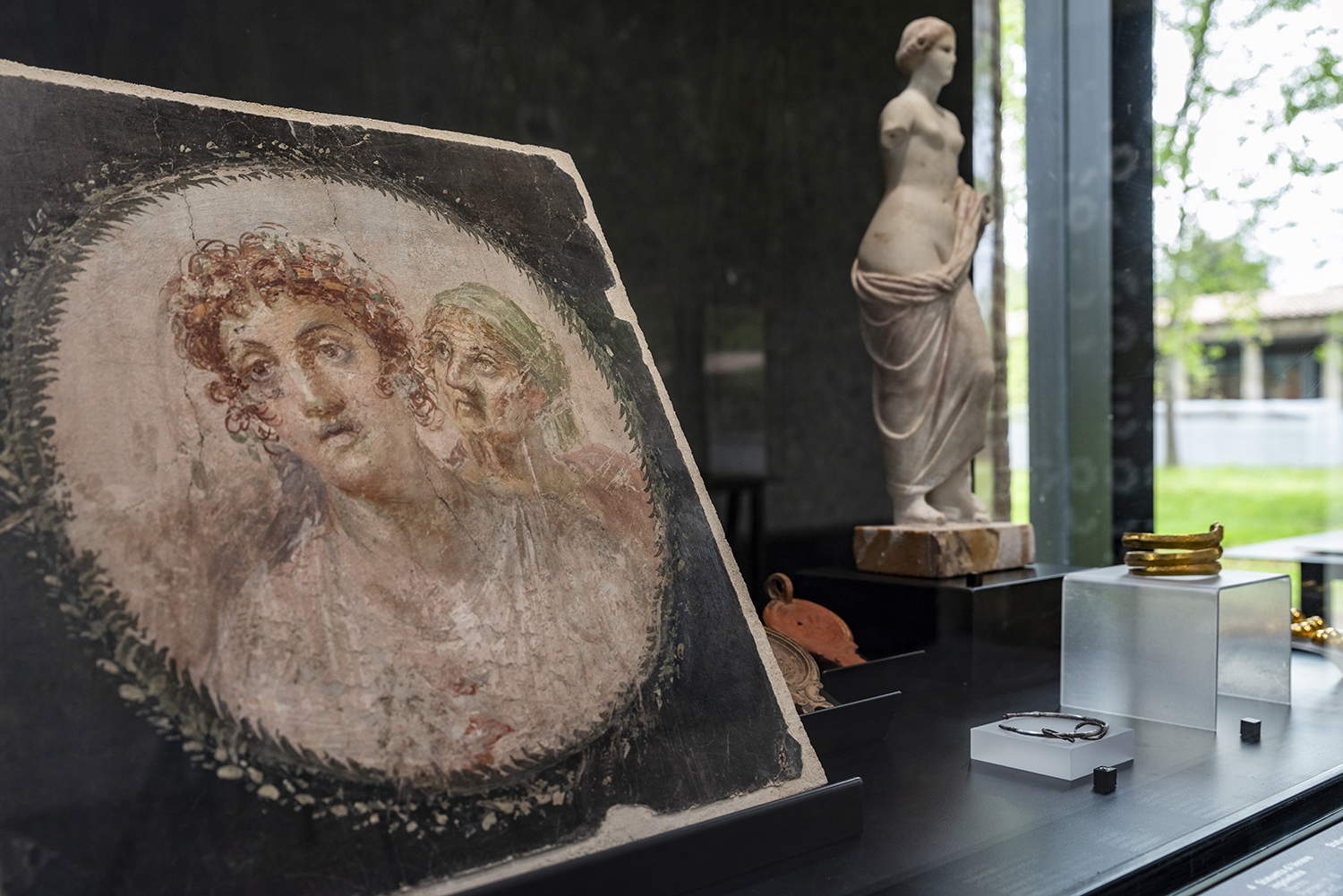
The exhibition opens with an introductory room where names and faces of women welcome the public, restoring their concrete and individual identities. The narrative continues with the most intimate dimensions of private life: household management, child rearing, relationships with servants, personal care and leisure activities. Ample space is devoted to the public and labor spheres: it is estimated that up to a hundred women were active in prostitution in Pompeii, many in slavery, but not all. Some were engaged in entrepreneurial activities of great importance, as shown in the room dedicated to the women who left an indelible mark on the city through their work. The last evidence of their existence can be found in the necropolis: monuments, inscriptions and grave goods preserve the memory of some of them.
The exhibition closes with a section that, on the one hand, presents profiles of some of the figures of women who contributed to the discovery and knowledge of Pompeii (Carolina Bonaparte, Wilhelmina Jashemski, Tatiana Warsher, Olga Elia), and on the other, offers visitors a selection of film clips dedicated to the female image, taken from the great cinema of settings inspired by Roman antiquity and Pompeii in particular.
The exhibition extends beyond the walls of the Palestra Grande, intertwining with a real thematic itinerary in the Archaeological Park: a selection of buildings related to the female presence is marked along the site, offering an immersive and interactive experience. Thanks to the MyPompeii app, visitors can listen to narrative podcasts telling the stories of eight women who actually lived in Pompeii, including Flavia Agatea and Eumachia (whose tombs are located at Porta Nocera), and again Eumachia at thenamesake in the Forum; Mamia and Nevoleia Tyche (at the Herculaneum Gate), Asellina (in her Thermopolis), Julia Felix (in her Praedia), Eutychis (in the servile quarter of the House of the Vettii), and Amaryllis (in the House of Marcus Terentius Eudoxus).
Also visible is a reconstruction of a vertical loom, related to one of the quintessential female activities, in the House of Venus in Shell.
The aim of the entire exhibition is thus to offer a broad and topical reflection on the role of women, returning through archaeology useful tools for understanding their presence in history and in the contemporary world.
In addition, starting in September, a series of readings and artistic performances dedicated to the Women protagonists of the exhibition will be held during special evening openings - as part of the ESOPOP enhancement project. The show is produced by Casa del Contemporaneo, texts and direction by Fabio Cocifoglia and Rosario Sparno.
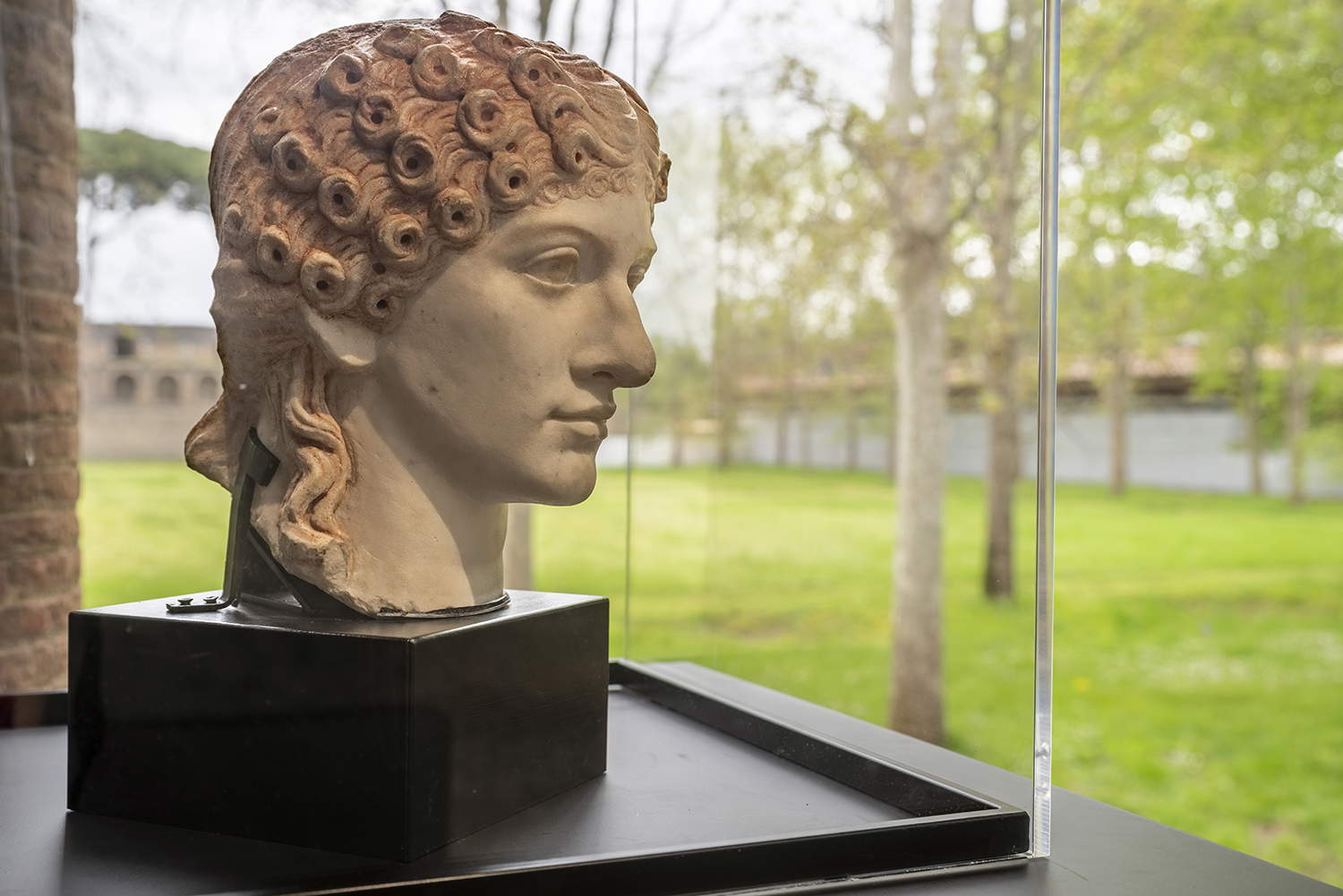
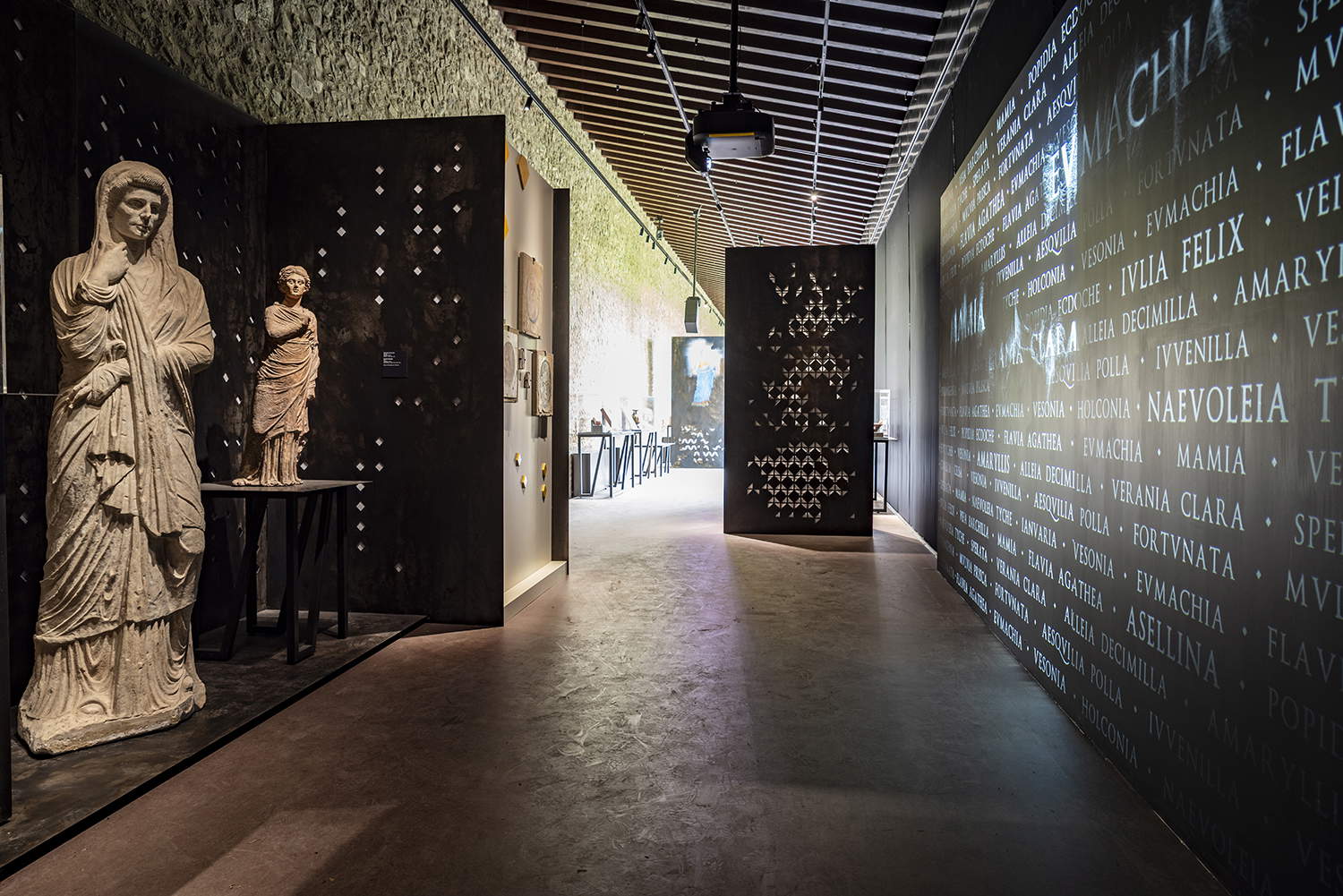
 |
| Pompeii hosts an exhibition on the condition of women and the role of women in the ancient city of Vesuvius |
Warning: the translation into English of the original Italian article was created using automatic tools. We undertake to review all articles, but we do not guarantee the total absence of inaccuracies in the translation due to the program. You can find the original by clicking on the ITA button. If you find any mistake,please contact us.